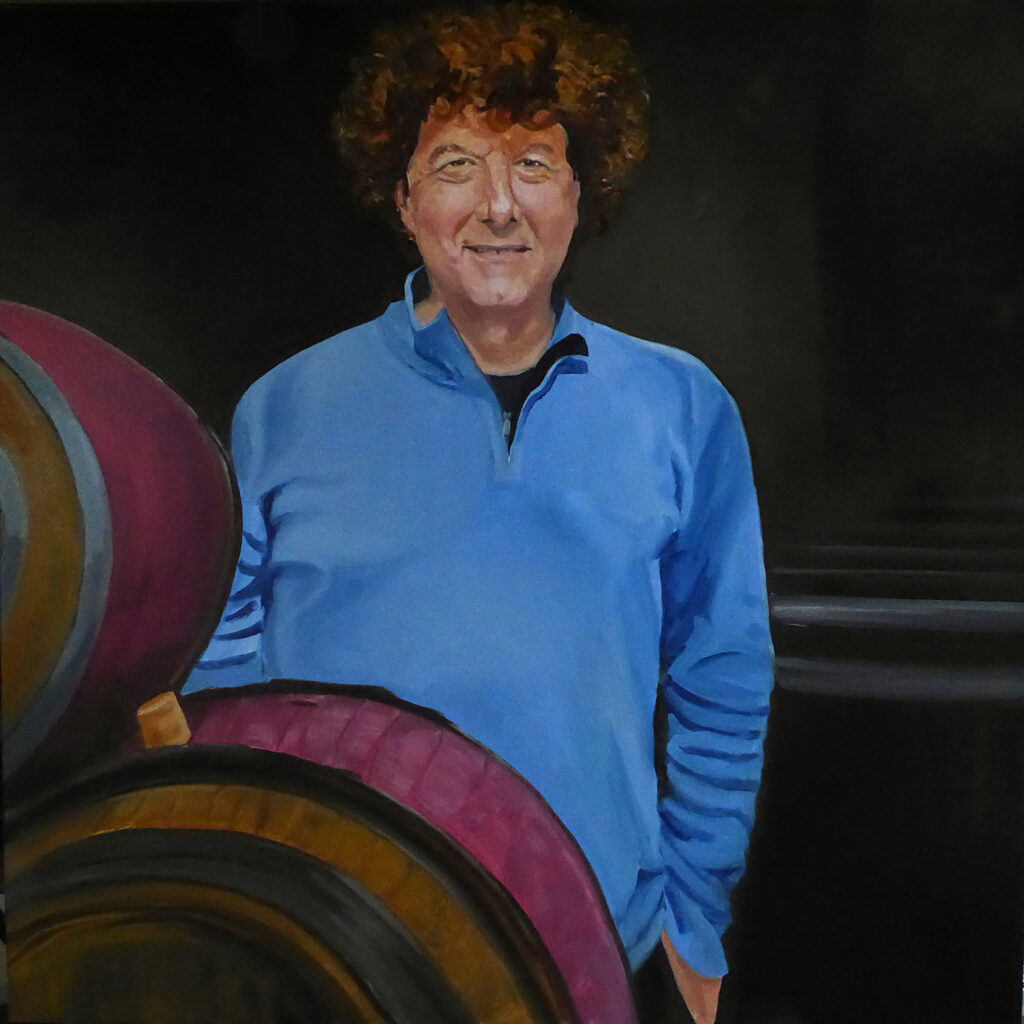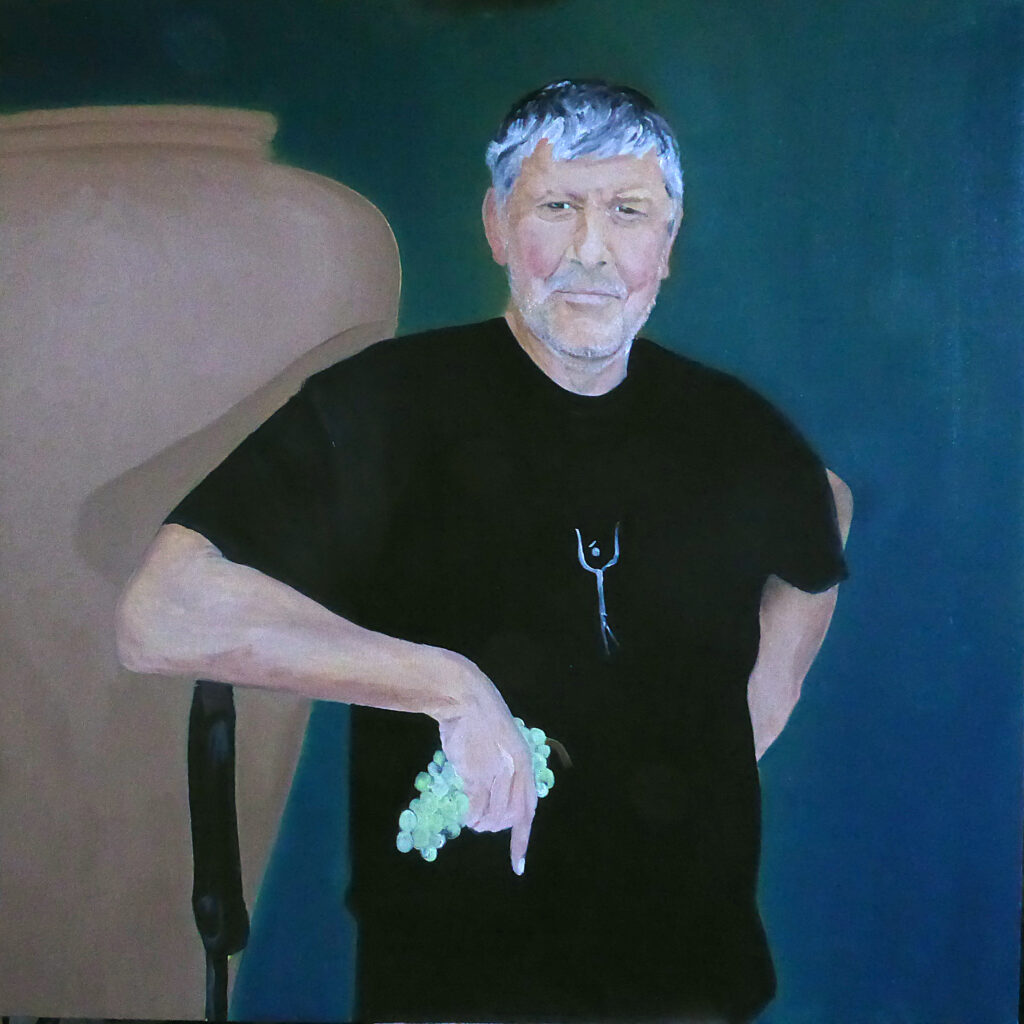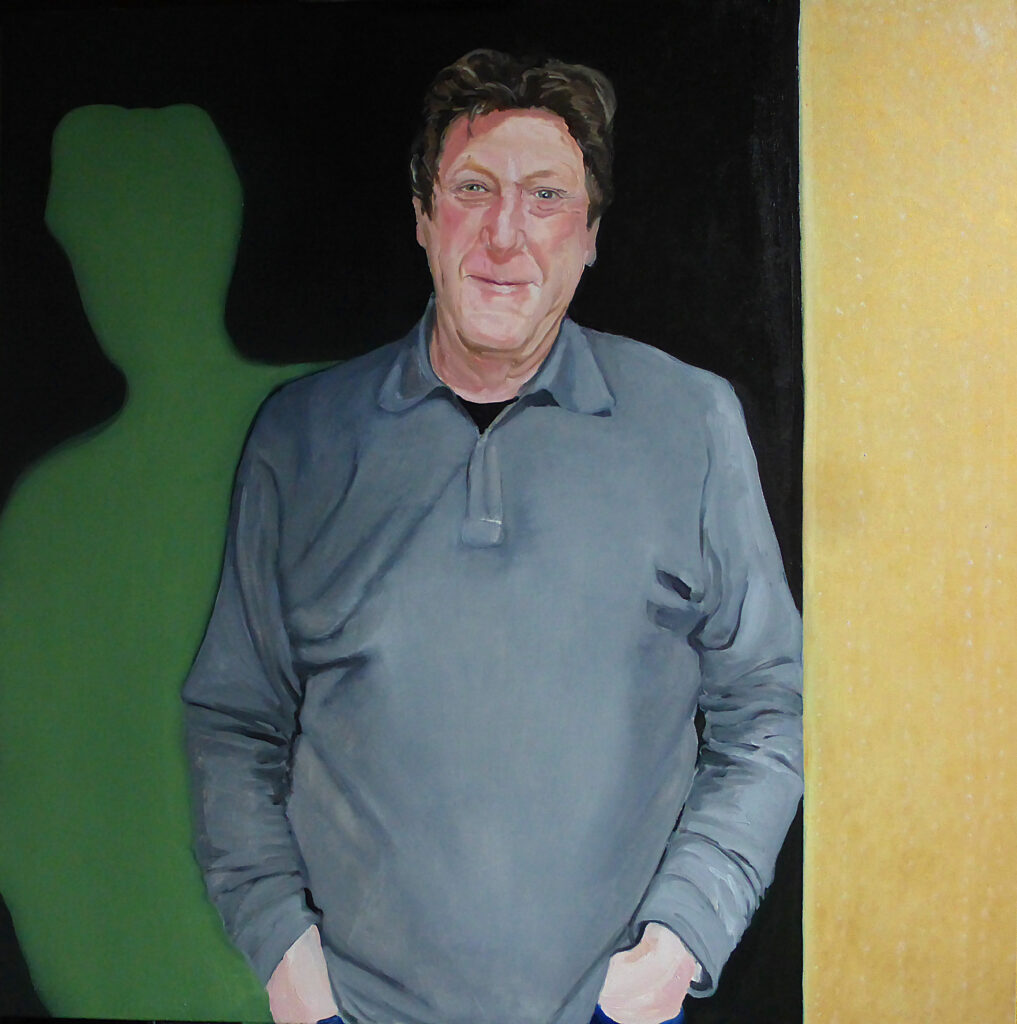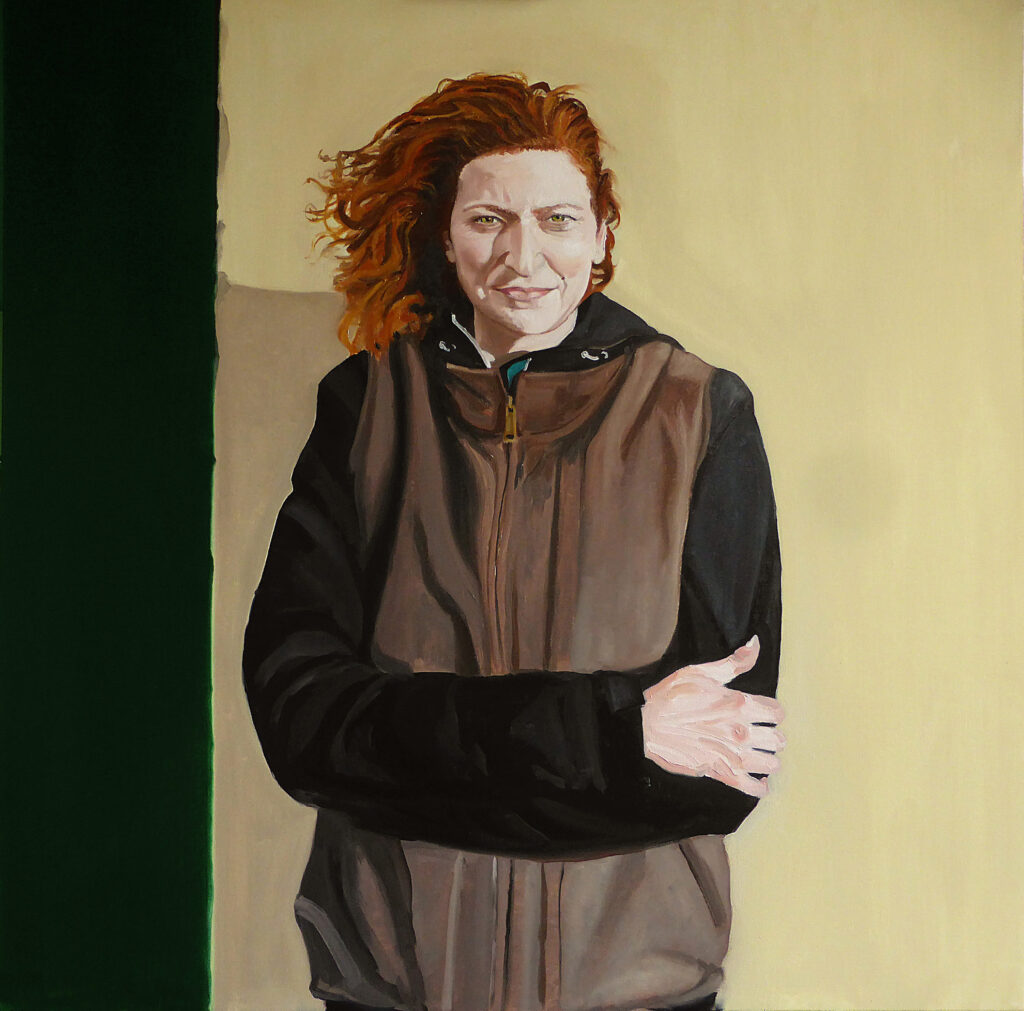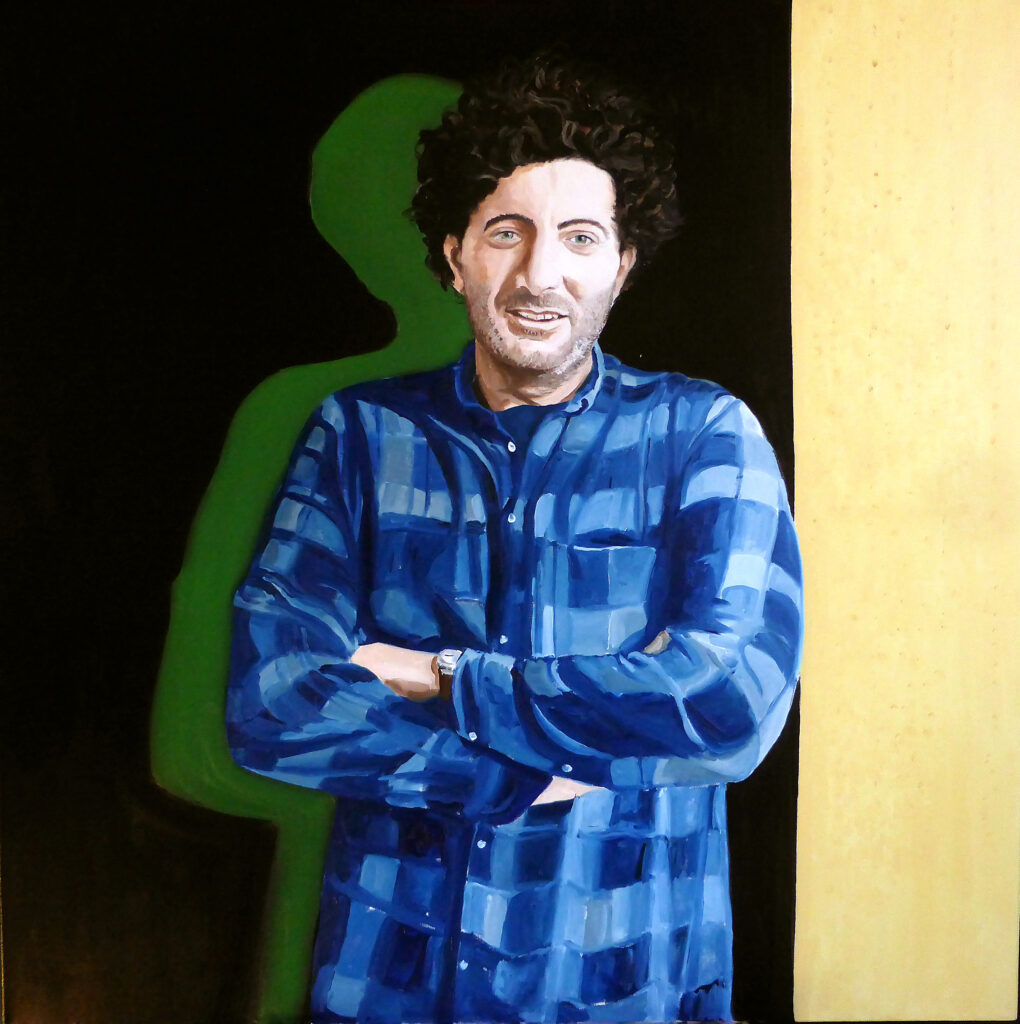
The other same : portrait of Guillaume Selosse
huile sur toile, 100 x 100 cm
Transmission is one of the most difficult acts in a parent’s life. For if they are possessions, they are above all values, and undoubtedly the value of the freedom to pursue an accomplished work in identity and difference. For the Champagne domain of Jacques Selosse, so prestigious and unique, transmission is successful. Guillaume Selosse has inherited know-how, thought, and ambition that his character, perhaps less anxious than that of his admirable father Anselme, assembles with beautiful serenity. At least that’s how I perceive it in this quiet presence, whose features I hope I have captured.
